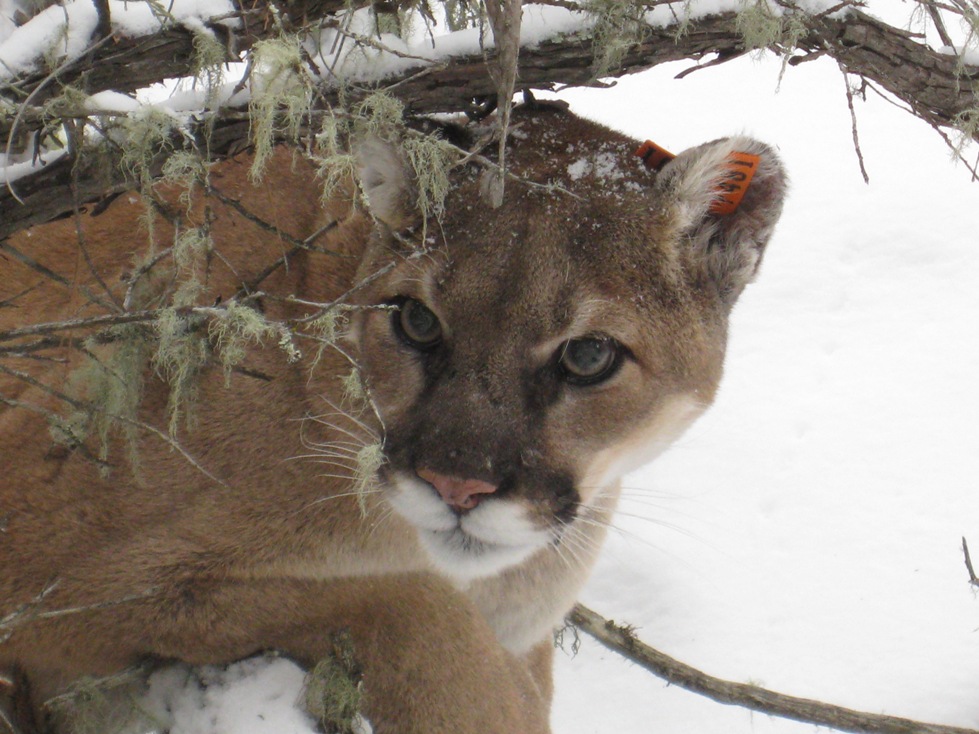
Joshua Haiar, South Dakota Searchlight
Facing public opposition, a state commission abandoned a plan Thursday in Huron that would have reduced the mountain lion population goal in South Dakota’s Black Hills by 50 animals.
The South Dakota Game, Fish and Parks Commission adopted the 2024 to 2028 Mountain Lion Action Plan with a population goal of 200-300 lions, rather than the proposed lower goal of 150-250. The plan, which is reevaluated every five years, sets population objectives and outlines strategies for monitoring, controlling and managing the animals.
The lower population target sparked hundreds of comments for and against the proposal. Written comments in the last month were split with a majority opposed but a significant minority in favor, according to the Department of Game, Fish and Parks.
Public opposition
Julie Anderson, of Rapid City, criticized the reduction proposal during the meeting, saying it would primarily benefit a small group of trophy hunters who would be able to hunt the animals in greater numbers to reduce their population.
“The senseless cruelty for the bloodlust of a few needs to end,” Anderson said earlier in written testimony. “The majority of the public does not approve of trophy hunting any animal, and killing an apex predator with or without hounds for bragging rights is an abomination against nature.”
Kathleen Schmidt said she has never seen a mountain lion in the Dalton Lake area of the Black Hills where she lives, but she’d like to.
“Upping the quota pleases the hunters, and we’re just wondering why this commission seems to favor the hunters over the wildlife watchers,” Schmidt said.
Some hunters also opposed reducing the population goal, including Dave Goodwin of the Black Hills Mountain Lion Foundation.
“We feel strongly that the mountain lion action plan was great as it was presented in draft form at the last commission meeting,” he said, referencing the higher population goal in the earlier draft.
Paula Von Weller of Spearfish testified that mountain lions play a critical role as predators in the Black Hills, helping to reduce disease by preying on diseased, weakened animals.
“Lions provide essential ecosystem services by removing chronic wasting disease from deer and elk populations,” Weller said.
Support for lower numbers
Patrick Weimer of Spearfish submitted a comment in support of the lower population goal.
“This will likely have a large positive effect on our deer, elk, turkey, and mountain goat numbers that have drastically dropped in the last several years,” he wrote.
Some ranchers have argued high mountain lion populations lead to increased livestock losses and safety risks. Leslie Soring of Whitewood commented that her sister lost a $10,000, three-week old colt to a mountain lion last spring.
“If mountain lions become less afraid of humans and continue to feel comfortable killing livestock and wandering into town, it’s only a matter of time before they harm someone,” she wrote in support of the change. “It is unfortunate that their habitat is shrinking and not something that they have caused. But it is happening, so our conservation efforts need to adapt to this.”
Incidents of mountain lions preying on domestic animals are low, according to the mountain lion plan.
“Fortunately, few landowners have interactions with mountain lions because of the animal’s secretive nature and relatively low densities,” the plan says.
Mountain lions are native to South Dakota and were numerous in the Black Hills until bounties and unregulated hunting drastically reduced their numbers. In 1978, the species was listed as threatened. Their recovery began as protections were implemented, and by 2003, a breeding population had reestablished. The first regulated hunting season was introduced in 2005 to manage their growing numbers.
Disagreement remains
Debate over how to best manage South Dakota’s mountain lions is likely to continue.
Before the population reduction proposal was introduced, several wildlife advocacy groups, including the Mountain Lion Foundation, Prairie Audubon Society, and the Humane Society of the United States, warned that the 200-300 population goal was too low, risked inbreeding and threatened the long-term survival of mountain lions. The groups also urged the state to invest in non-lethal conflict prevention methods, such as livestock guardian dogs, rather than hunting.
The plan says hunters in the Black Hills Fire Protection District, where most of South Dakota’s mountain lions live, must continue reporting any harvested lions within 24 hours. The harvest limit in the district is 60 mountain lions per year, or 40 females if that number is reached first.
The state collects tissue samples from harvested animals to monitor population health. In other parts of the state, where mountain lions are less common, a year-round open season with no limits remains in place.
Under South Dakota law, landowners can kill a mountain lion if it poses an immediate threat to their livestock or pets, but they must report the incident to Game, Fish and Parks within 24 hours.
According to a survey mentioned in the plan, 80% of residents say it’s important to them to know that mountain lions exist, whether or not they ever see one in the wild; 83% of residents think hunting is an acceptable way to manage mountain lion populations.
Other news: Fee increases finalized
The commission also finalized a proposal aiming to raise nearly $10 million of additional revenue annually through various outdoor recreation fee increases. The commission made one amendment to the proposal, removing certain cabin-fee increases.
Hunter organizations including the South Dakota Wildlife Federation, South Dakota Bowhunters Association, and South Dakota Waterfowl Association all expressed support for the proposal prior to the commission’s unanimous vote.
The Legislative Rules and Review Committee will now consider giving it the final stamp of approval.
